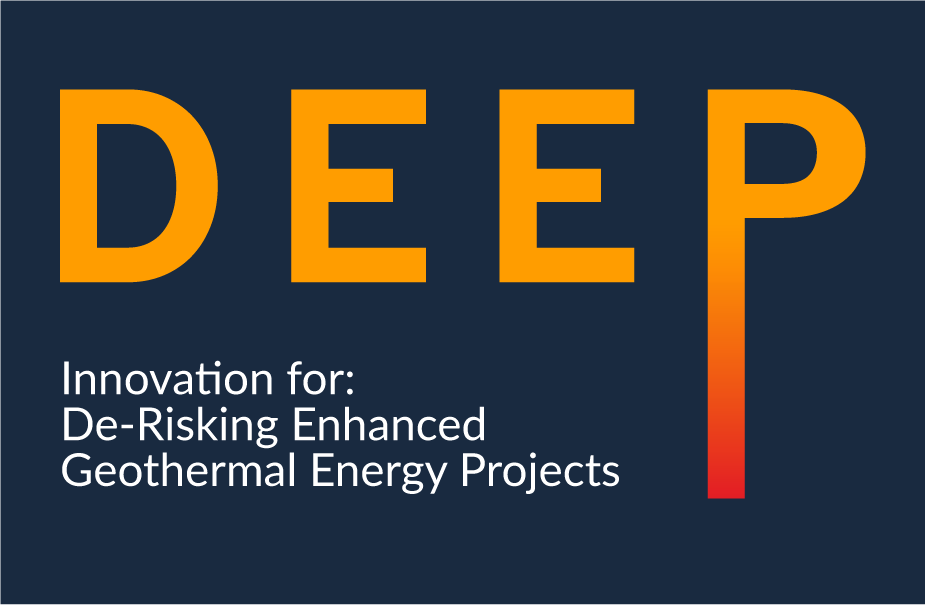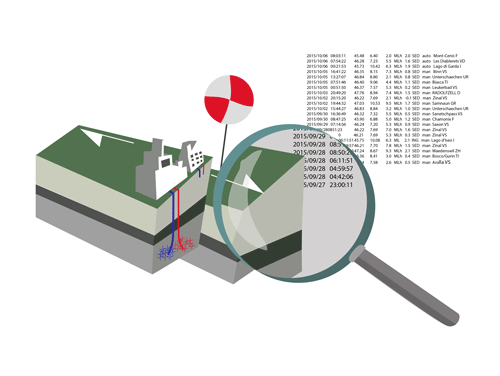Special Projects & International Collaboration
Seismology and the observation of earthquakes is one of those scientific disciplines that from its very beginning embraced international collaboration and the free sharing of data and ideas across academic groups and national boundaries. As one of Europe’s leading seismological services, the Swiss Seismological Service (SED) at ETH Zurich has a long history of promoting and engaging in various national and international initiatives. We also collaborate actively with European and international organisations in Seismology. Many SED staff members contribute to the governance of these organizations and take over community duties. The SED, with support from ETH, hosts a number of offices for various international organizations, or acts as their national focal point.
The CTBTO is an international organisation based in Vienna that monitors compliance with the Comprehensive Nuclear-Test-Ban Treaty (CTBT) by everyone and everywhere. To make sure that no nuclear explosion goes undetected, the CTBTO collects and analyses data from a global network of monitoring stations, looking for signs of such explosions like seismic waves. The Swiss contribution to this global network is the DAVOX seismic station, which is run by the SED on behalf of the Federal Department of Home Affairs and the Federal Department of Foreign Affairs. The SED also acts as National Data Center for the CTBTO for all waveform data, and sends scientific experts to the technical working groups of the CTBTO. Our collaboration with the CTBTO is described in the topic «nuclear-test-ban monitoring». Learn more about CTBTO here.
The European-Mediterranean Seismological Centre (EMSC) is a non-governmental institution that was founded in 1975, following a recommendation from the European Seismological Commission (ESC). Its members are seismological observatories and earthquake services from the wider European-Mediterranean region. The EMSC operates a system for rapid collection and dissemination of earthquake information, and provides services to the public as well as to the scientific community. The SED is a member of the EMSC since the beginning, and actively engages in the governance of EMSC. All our earthquake location results for events recorded in Switzerland are shared with the EMSC in real-time and contribute to the common products. Learn more about the EMSC here.
The European Plate Observing System (EPOS) is a European Research Infrastructure that facilitates integrated use of data, data products, and services from academic institutions and national services active in solid Earth science in Europe. After more than 10 years of planning and preparatory work, it was established as European Research Infrastructure Consortium (ERIC) in 2018. Switzerland is one of the founding members of EPOS (with observer status). The SED was heavily engaged in the build-up of EPOS, and coordinates the Thematic Core Service for Seismology within EPOS. As part of the EPOS Seismology waveform services, the SED operates a primary node of the European Integrated Data Archive (EIDA) within ORFEUS. The dense multi-parameter earthquake observation network that the SED operates in the Valais is one of EPOS’s Near Fault Observatories. Learn more about EPOS here.
ORFEUS (Observatories and Research Facilities for European Seismology) is a non-profit foundation that promotes seismology in the Euro-Mediterranean area through the collection, archival and distribution of seismic waveform (meta)data and closely related products. The data and services are collected and developed at national level by more than 60 seismological agencies and further developed, integrated, standardized, homogenized and promoted through ORFEUS.
The core ORFEUS services are:
- the European Integrated waveform Data Archive (EIDA);
- and the European Strong-Motion databases (SM).
ORFEUS currently provides access to ~10,000 stations, including dense temporary experiments. Contributing to ORFEUS data archives means long-term archival, state-of-the-art quality control, improved access and increased usage. Federated web services are used to ensure optimal data access. Particular attention is paid to adopting clear policies and acknowledging the crucial role played by data providers, who are part of the ORFEUS community.
ORFEUS data and services are assessed and improved through the feedback of a User Advisory Group (UAG), comprised of European Earth scientists with expertise encompassing a broad range of disciplines. All ORFEUS services are developed in coordination with EPOS and are EPOS compliant. ORFEUS is one of the founding parties and fundamental pillars of EPOS Seismology.
Since 2018, the ORFEUS Secretariat is located at the Swiss Seismological Service (SED) at ETH Zurich. The Secretary General, Dr. Carlo Cauzzi, is the general coordinator of all the activities of the Foundation, as detailed in the ORFEUS Bylaws.
Learn more about ORFEUS here.
European Facilities of Earthquake Hazard and Risk (EFEHR) is a non-profit network of European academic institutions, established in October 2010. EFEHR brings together researchers from earth science, seismology, engineering, computer science and social science and aims at advancing the scientific knowledge of seismic related hazards and risks.
EFEHR research alliance is built upon the legacy of past EU-founded projects i.e. NERA, NERIES, LESSLOSS, SYNER-G and SHARE, and SERA. EFEHR is not replacing national or local efforts; it is supporting and enriching them in the European-Mediterranean region. The core research activities focus on the advance of scientific knowledge and innovative framework in seismic hazard and risk assessment. The EFEHR consortium coordinates and maintains the access of seismic hazard and risk models, data, tools and products via its federated web-services and standalone web-platform. EFEHR constitutes one of the three service domains in the Thematic Core Service (TCS) Seismology within the European Plate Observatory System (EPOS). The two others are ORFEUS (waveform services) and CSEM-EMSC (seismological products services). New synergies and integrations with key EPOS services are foreseen as a transition of seismic hazard and risk models towards geoscience datasets. EFEHR will maintain the collaboration with Global Earthquake Model (GEM) to develop and adopt open-standards and open-software for seismic hazard and risk calculation.
For any additional information, please visit www.efehr.org.
The Energy Strategy 2050 established by the Swiss federal Office of Energy (SFOE) foresees deep geothermal energy to be an important component of Switzerland's future energy portfolio. The experiences of the Basel (2006) and St. Gallen (2012) geothermal projects in Switzerland, but also of international projects in Pohang (South Korea) or Strasbourg (France), illustrate that in order to successfully exploit deep geothermal energy for heat use or electricity generation, adequate risk governance of potentially induced seismicity is critically important for establishing safe and economically viable projects. Achieving this goal primarily involves providing state-of-the-art seismological advice for decision-making to cantonal authorities, and enabling an adequate, independent, and transparent seismic monitoring for deep geothermal projects. These measures will also promote the public acceptance of the technology on the long run.
The GEOBEST project, funded by the Swiss Federal office of Energy (SFOE), enables the Swiss Seismological Service at ETH Zurich to support cantonal authorities in handling issues related to induced seismicity during all development phases of a deep geothermal project (preliminary investigation, approval, construction, and operation).
The Underground Labs group covers the monitoring and analysis of seismological data recorded in research projects in underground rock laboratories (URL).
The Swiss Seismological Service conducts underground experiments to study for example earthquake nucleation, geothermal heat exploration or rock damage. Underground rock laboratories provide the possibility to study the rock response under semi-natural conditions while designing controlled experiments and providing accessibility for high-resolution monitoring. Seismic events recorded in underground rock laboratories have very small magnitudes from approximately magnitude -6 to magnitude 0 (pico-seismicity) and correspond to (micro-) fractures on the millimetre to meter scale.
The group performs research in the field of pico-seismicity, including temporal-spatial evolution, source analysis and statistical seismology. In addition, the group develops infrastructure for underground experiments, especially improved high-frequency sensors. The characterization of sensor and monitoring systems and the comparison to alternative measuring systems such as fibre optics plays an important role. In addition, the group develops efficient software for the automatic processing of events recorded underground.
The group plays a role in the seismic hazard and risk analysis before and during the start of underground experiments.
The group is working in close collaboration with the Swiss Competence Centre for Energy Research-Supply of Electricity (SCCER-SoE), the Induced Seismicity group and the Laboratory Seismology group.
Learn more about the Underground research projects at ETH Zurich: The Bedretto Laboratory for Geoenergies and the Grimsel In-Situ Experiment.

